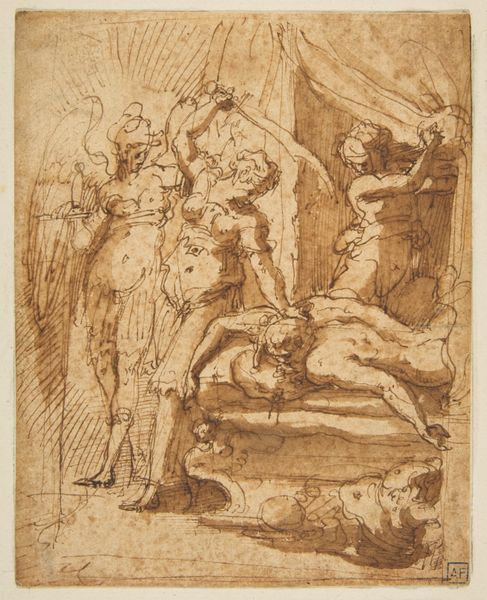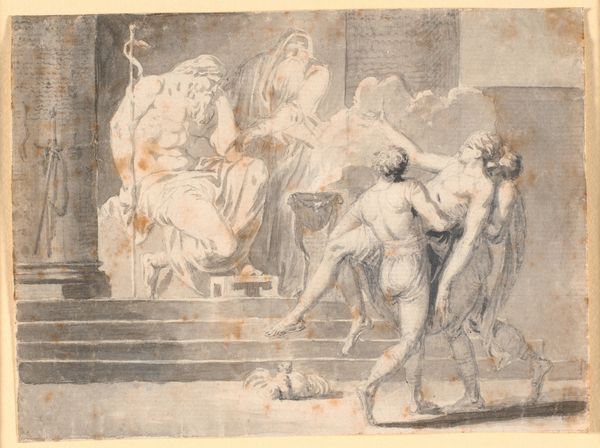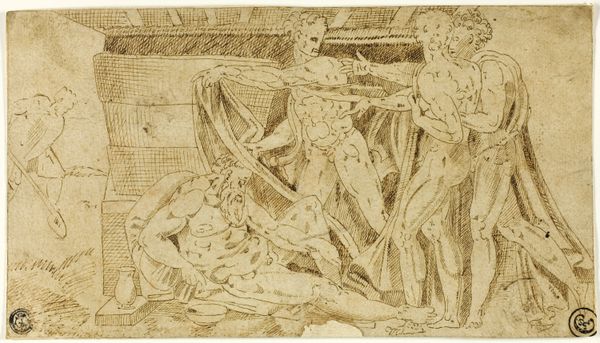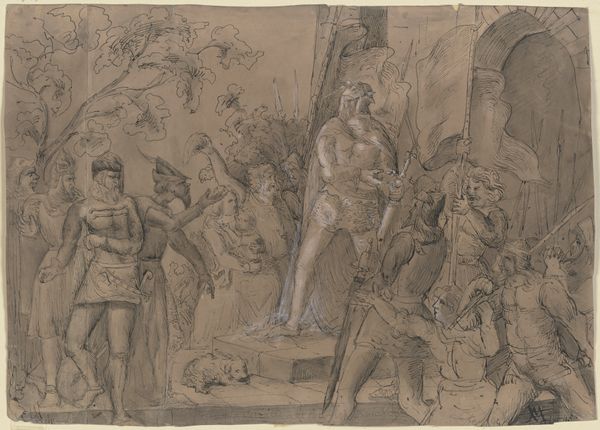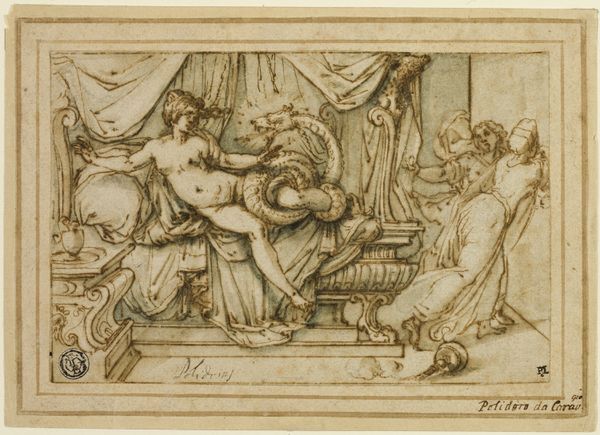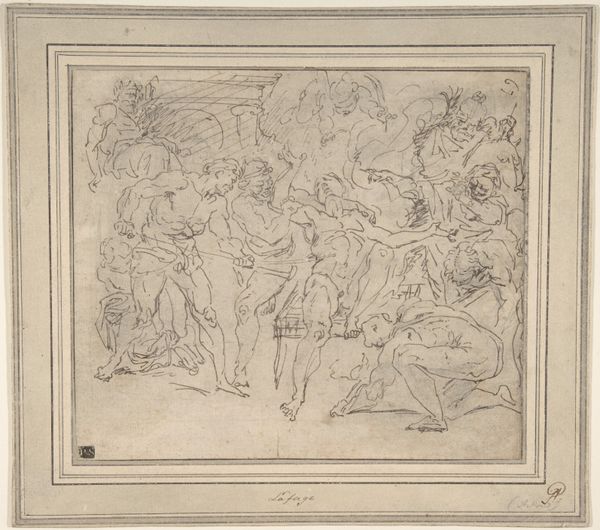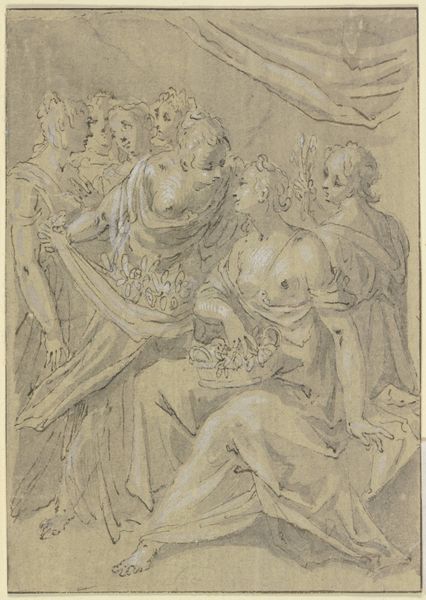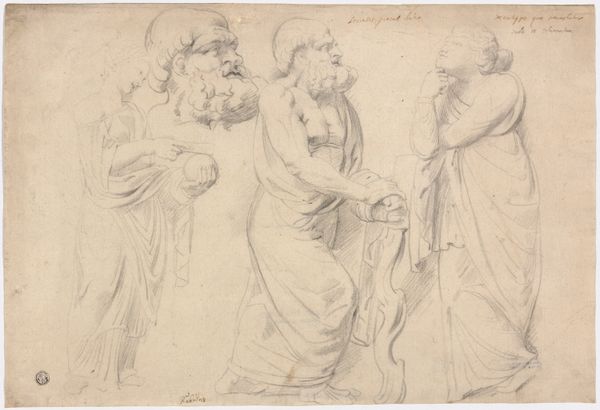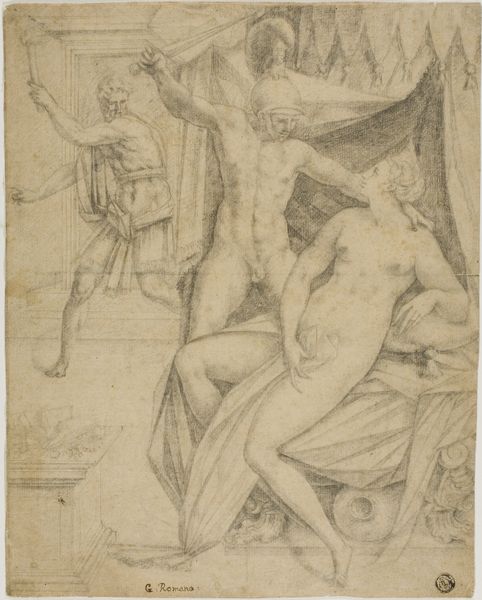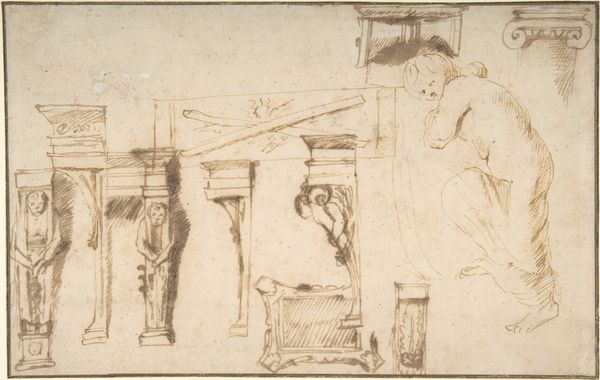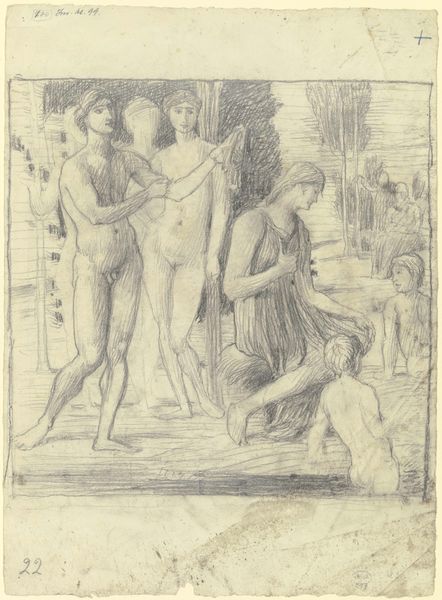
Tre kvindefigurer, reliefagtigt anordnede. Tre Horae? (B.S.) 1741 - 1825
0:00
0:00
drawing, pencil
#
portrait
#
drawing
#
classical-realism
#
figuration
#
pencil
Dimensions: 263 mm (height) x 352 mm (width) (bladmaal)
Curator: This is a drawing called "Tre kvindefigurer, reliefagtigt anordnede. Tre Horae? (B.S.)", which roughly translates to "Three female figures, arranged like a relief. Three Horae?", and it's attributed to an anonymous artist, dating somewhere between 1741 and 1825. The medium appears to be pencil on paper. What strikes you initially? Editor: It’s subdued. The muted tones, the sketchy lines... a pervasive sense of melancholy almost radiates from these figures. The artist leaves so much unsaid, which seems intentional. Curator: Indeed. The ambiguity is captivating. The possible identification as the Horae—the goddesses of the seasons, or perhaps even the Hours—adds another layer of depth. This piece feels like a fragment, a memory. They become ciphers representing cyclical time, beauty, or even fate. Editor: I agree that the cyclicality presents itself as important. Note the composition itself – the figures’ garments all appear as circular in structure. Each woman stands independently but as an essential part of the other two. This technique produces a sense of completion from any possible vantage point. Curator: I find myself drawn to the contrasts in the drapery and shading. One figure has defined edges and contours while the second and third figures melt slightly. The artist certainly captured a very specific moment. Their gowns look like they might have a specific ritualistic use based on their heavy covering and specific arrangement. Editor: Certainly. They are posed in such a specific way and appear burdened by their responsibilities. It isn't simply a visual recording of an everyday event but it has clearly taken its reference points from reality. It really offers an interesting example of Neoclassical-era formalism. The classical garments point back to older styles but bring themselves into the future. Curator: Agreed. It makes you consider how symbols and figures can morph across centuries while still holding the imprint of their origins, or maybe suggesting other archetypes that repeat through our visual history. What a suggestive creation. Editor: Yes, indeed, the drawing leaves me contemplative regarding its own quiet visual grammar. I really found an interesting use of contrast as the backbone to my analysis.
Comments
No comments
Be the first to comment and join the conversation on the ultimate creative platform.
